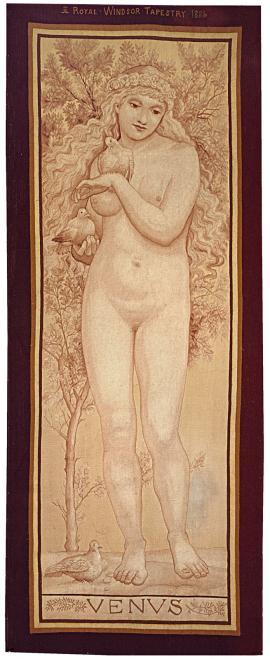19/20th Century
The early 19th century is best known for the “Art” tapestries produced at the Gobelins after designs by contemporary artists, which were produced alongside copies of earlier designs from the 16th to 18th centuries. The second half of the century saw the beginnings of another design revolution. Today we are most familiar with the work of William Morris (1834-1896) who, along with the Pre-Raphaelites, such as Edward Burne-Jones (1833-1898), created designs that were inspired by medieval tapestry that predated Raphael. Significant numbers of works were produced at Merton Abbey, and are among the most important contributions to the Arts and Crafts movement. In the 20th century tapestry design was impacted by modernism, and by large numbers of artists including Pablo Picasso (1881-1973), Fernand Léger (1881-1955), Marc Chagall (1887-1985). More recently works by Alexander Calder (1898-1976), Frank Stella (1936-), and Henry Moore (1898-1986) have been commissioned. In addition there are numerous works by artist weavers, who not only design but also weave the tapestry themselves, breaking the centuries old division between designer and weaver.
The Arming of the King
SOLD
Coronation Tapestry of King George V
Morris & Co, Merton Abbey, 1914
Designed by Sir Bernard Partridge (1861-1945)
14ft 2in width x 10ft 10in height
4.32m x 3.30m


